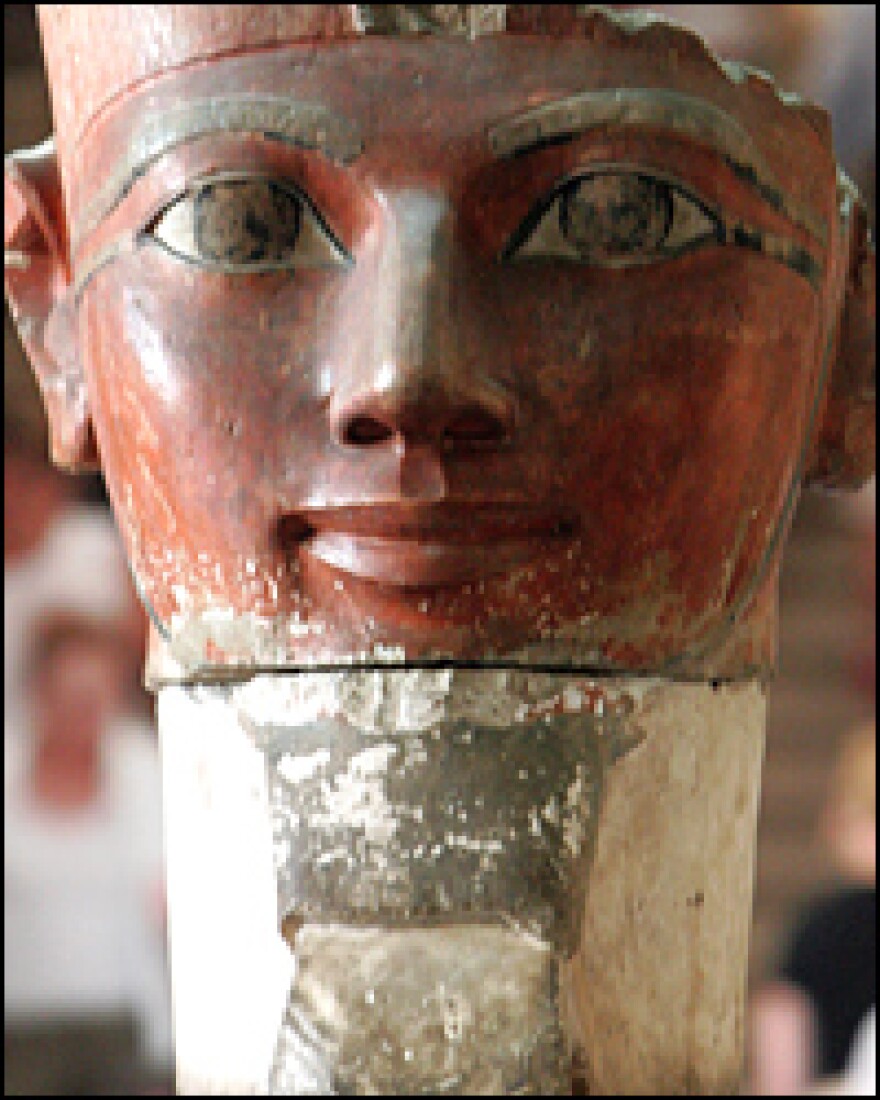
Some 3,500 years ago, she was Egypt's most powerful woman. But as pharaoh, Hatshepsut felt compelled to assume a male persona to maintain her grip on power.
Hatshepsut, a member of the 18th dynasty and daughter of Thutmosis I, reigned from about 1479 to 1458 B.C., eventually controlling both Upper and Lower Egypt.
Her path to power was circuitous. She was said to have shunned her early education in the belief that, because she would never be pharaoh, she didn't need it.
It was young Hatshepsut's marriage to her even younger half-brother, Thutmosis II — who succeeded his father as pharaoh — that brought her into the inner circle of power.
When Thutmosis II died a few years later, he left as heir to the throne his son, Thutmosis III, conceived with a commoner. But Thutmosis III was too young to rule, and Hatshepsut was allowed to reign as queen dowager.
Although women in Egypt at the time enjoyed a higher status than in many other parts of the ancient world, having a female regent was rare. In an effort to allay concerns over political challenges arising from her gender, Hatshepsut was given legal authority to rule as "king" and began frequently dressing as a man — complete with a false beard to fulfill that role.
Hatshepsut overcame those concerns, however, and historians today regard her as one of the greatest rulers — male or female — of her time.
Hatshepsut enjoyed a record in office that would be the envy of many of today's political leaders: Not only did she expand Egypt's territory, but she also is credited with expanding trade with other parts of the ancient world. During her 22 years in power, Hatshepsut also followed in her father's footsteps by deftly balancing competing interests among the nation's religious and social orders.
She was also one of ancient Egypt's most prolific builders, ordering numerous construction projects throughout her kingdom.
Hatshepsut's reign is considered by many historians to have been a model for Egypt's most famous female ruler, Cleopatra, who lived in the first century B.C.
Copyright 2023 NPR. To see more, visit https://www.npr.org. 9(MDM3NjYwMjA5MDE1MjA1MzQ1NDk1N2ZmZQ004))

